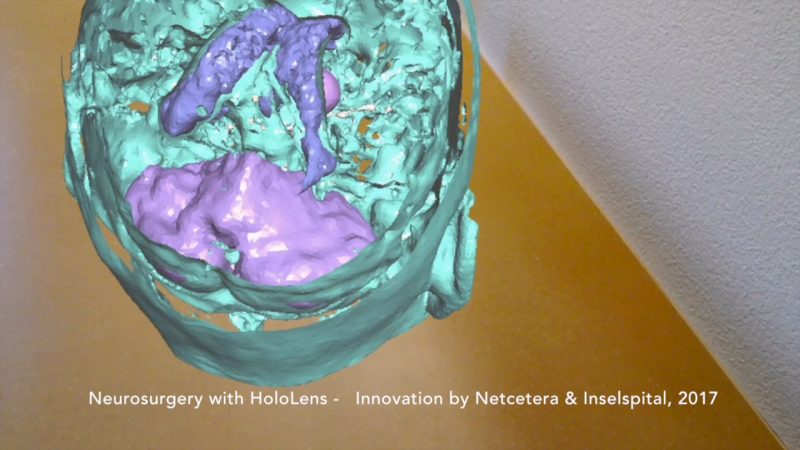The first prototype was successfully tested at Inselspital Bern: Thanks to augmented or mixed reality, interventions can soon be better planned.
Together with the software company Necetera Professor Andreas Raabe's team at the University Department of Neurosurgery has trialled a new area of application for the HoloLens in neurosurgery. Necetera was founded in 1996 by five fellow students and comprises various software companies in addition to the Netcetera offices.
Simplified operation planning
The first tests were aimed at visualising the findings and the associated surgical planning. CT and MRI scans of patients were broken down into the various segments together with data from neuronavigation, coloured and visualised in real size in 3D. Thanks to the spatial view, it is easier for the surgeon to plan the operation.
Various segments such as the head, blood vessels or individual areas of the brain are highlighted in colour and can be shown or hidden as required. The size and position of the segments can be changed using gestures and voice control. This allows you to view the skull from any perspective and in various degrees of detail.
The associated application is simple and intuitive to use. It runs on the HoloLens. Patient data can be loaded directly from the neuronavigation into the HoloLens. The performance of the HoloLens is already sufficient to work with and no additional devices are required. Although everything sounds very mature, the solution is still in prototype status and not in medical use.
Added value for patients and training centres
Patients might also be able to better understand what exactly happens during the operation if they can see the visualisation beforehand. Any uncertainties and associated fears can then be addressed more easily and comprehensively.
It is becoming increasingly clear that VR can offer added value in all kinds of areas and is not just entertainment. As already reportsvarious medical teams are already using VR for pain therapy.
VR will almost certainly also bring progress towards a better understanding of anatomy and physiology, not only for use in surgery but also for the training of doctors and medical staff in general.
Source: Necetera








